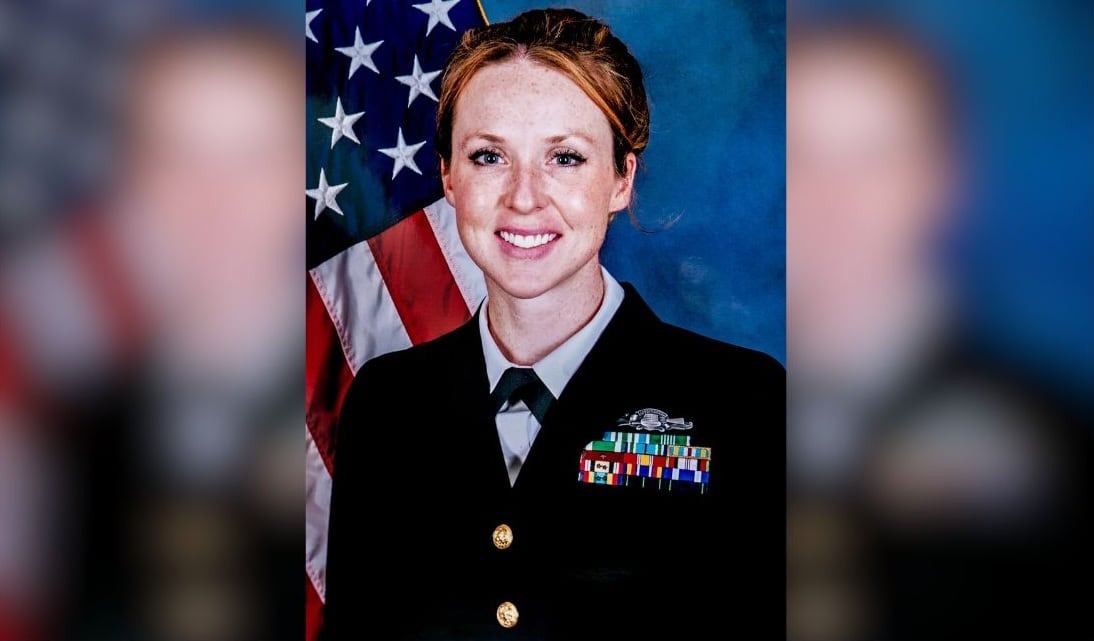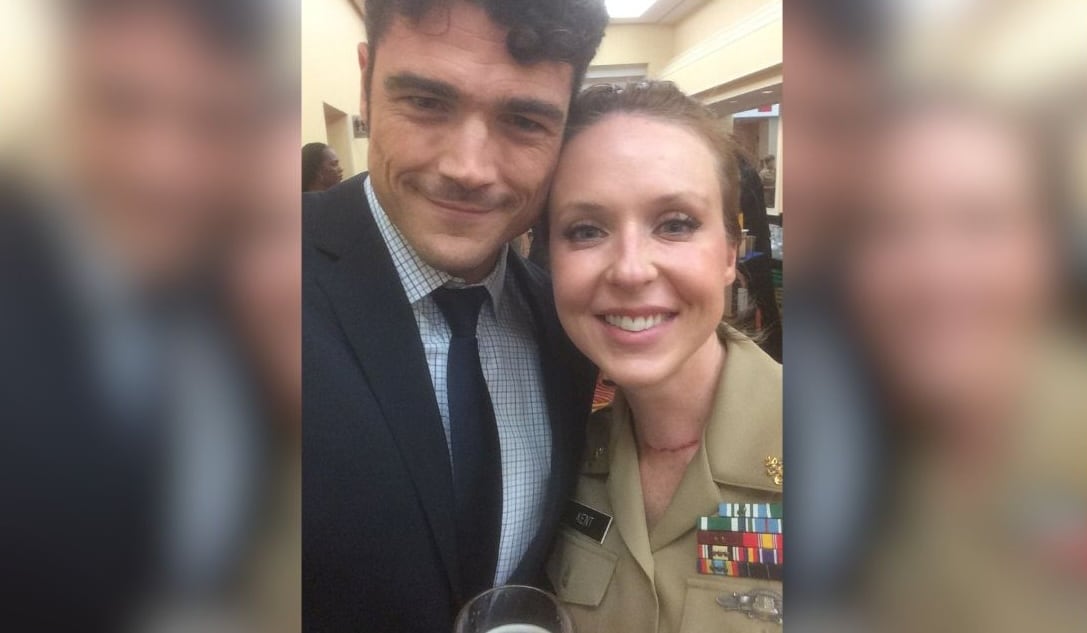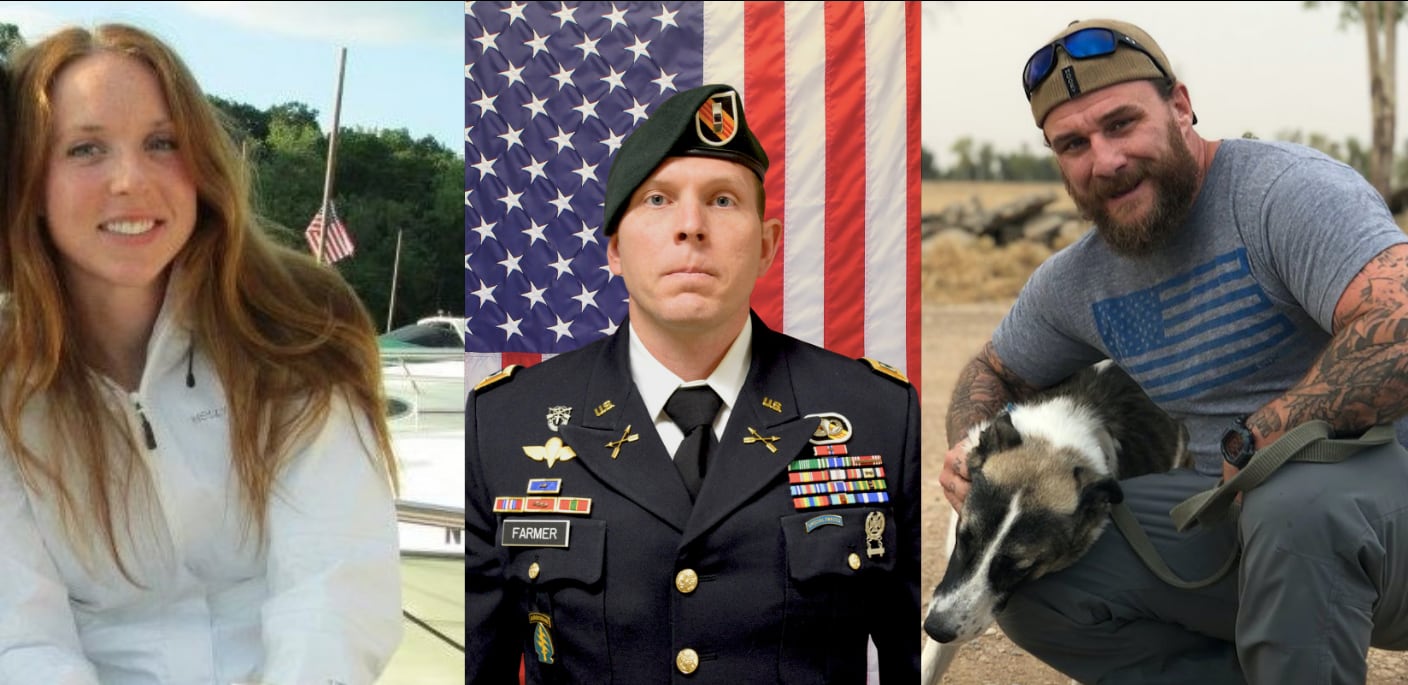Manbij, Syria, January 16, 2019
The grain silos CFT Manbij called home were bustling with people preparing for the day’s mission on a chilly, overcast Wednesday morning on January 16. It was winter in Syria, so everything seemed muddy and damp, devoid of sunshine. Shannon wore her black North Face hiking pants, a down jacket, and a scarf around her neck to block the brisk wind that day — but which could easily be repurposed into a hijab if the situation required it. Most weren’t wearing plate carriers as they were reasonably comfortable in this location, but still packed them in the vehicles — just in case. Shannon didn’t carry a rifle, instead opting for a Glock pistol tucked into her waistband. Scotty carried an H&K 416.
CFT Manbij departed from the silos at approximately 11 a.m. local time. There were two American vehicles in the convoy: Shannon and Jon in the lead vehicle while Clarke drove the other with Scotty and Chief Farmer. Jasmine, two more American Green Berets, and sixteen SDF soldiers following in gun trucks rounded out the rest of the manifest.
Their convoy tried parking at the school as planned, but the situation on the ground dictated a move to their alternate location, outside the Palace of Princes restaurant. After parking their vehicles to deliberately make it difficult for anyone to walk up unnoticed and slip an IED under their trucks, Clarke moved to the restaurant’s top floor and established overwatch for most of the market.
On the sidewalk below, Shannon and Scotty synced watches and reaffirmed the exact time everyone was required to be back.
“All right, Jon, we’ll be back no later than 1100 Zulu. You know what to do if we’re not back by then,” Shannon said, confirming an abbreviated five-point contingency plan commonly used throughout the military.
“Roger, we know the plan. Good luck, guys,” Jon replied.
Clarke watched as the routine patrol departed, with Shannon and Scotty breaking off to move toward their destination. He didn’t know exactly where they were going or who they were meeting, but such was life on a Shannon Kent mission.
Clarke had been to the restaurant on two previous occasions and was comfortable conducting his own low-level source operation by talking to a few visitors in the restaurant. Shannon might be doing the big stuff, but Clarke wanted to pitch in by establishing rapport with locals while maintaining visibility from the second floor. He struck up a conversation with the restaurant owner and got his business card, tucking it away for future use. You never know who you might need, and having friends in the area is better than enemies.

Pulling security during the daytime in a bustling city market is nerve-racking. They were surrounded by two- and three-story buildings all with their own windows and doors that could open at any time. You never know what’s truly going on or who might be watching you from afar. Clarke felt uncomfortable but couldn’t put his finger on what it was. There were more Arabs in this Kurdish-owned store, but that wasn’t necessarily indicative of anything since many properties in Bandar were like that. Clarke was receiving a lot of looks, though. More than usual. Am I being discreet enough? he wondered.
Then he noticed something outside the window. Four or five guys were literally staring him down, not talking. They didn’t seem very friendly, but they weren’t doing anything that could be considered hostile either.
Little did he know, ISIS had started planning an assassination in December 2018. They wanted to use a suicide bomber to hit the American soldiers in Manbij who had been causing so many problems, so they imported operatives from Aleppo who linked up with local contacts in Manbij that were already patrolling the city, looking for a chance to attack. They finally saw an opportunity on the sixteenth of January.
Clarke moved back down to the street so that one of the Green Berets could go inside and use the bathroom. As the Green Beret came back out to relieve Clarke, they saw Shannon and Scotty on their way back to the restaurant along with the rest of the element that had been out on a foot patrol.
They regrouped out front as the vehicles were prepared for movement. Clarke was standing next to his truck, ready to go, talking to one of the Green Berets and an SDF soldier.
At 12:38 local time, just as the team was about to get back in their trucks and drive back to the grain silos, a man approached their position from south of the market. He walked right past Clarke toward the restaurant entrance, where the rest of the group stood. Without warning, he detonated a hidden suicide vest within feet of Shannon, Scotty, and the rest of their group.
ISIS later claimed responsibility.
Clarke felt an incredible force push him back, like a 200-mile-per-hour gust of hot wind hit him. A person, three feet to his front, fell straight back like a stiff plank — his face was immediately devoid of life. The explosion threw Clarke back anywhere from four to twelve feet — he can’t quite remember but knows it was a significant distance. His pants were torn up; his face and hand were covered in second- and third-degree burns. He survived, but his injuries would eventually require multiple surgeries.

The ODA’s junior weapons sergeant and junior engineer sergeant were positioned farther away and were among the few Americans outside the immediate vicinity of the blast. A driver in another vehicle was also protected from the explosion. Everyone else was exposed, standing in the open and very close to where the bomb detonated. Paper flew everywhere. Hot ash covered everything. There was mass confusion in the street. There was blood.
Clarke started scrambling to check bodies in an attempt to identify his teammates, but the first few people he found were Syrian. No one was responsive. For a moment, he couldn’t find any other Americans still alive. Finally, he found a body with the black Patagonia jacket Chief Farmer always wore. But the nature of his wounds made further identification impossible at the scene.
Okay, there could be a follow-on attack, Clarke realized, trying to process what was happening right in front of him. He moved inside a store next to the restaurant because the restaurant itself was completely blown out. The shopkeeper asked him if he was okay and offered him water, but Clarke’s mind was still racing. He told the shopkeeper to look for Daesh and to let him know if anything happened in the next thirty seconds.
Thirty seconds transpired without incident, so he went back outside. Of course, the threat of a follow-on attack wasn’t completely gone, but he could be more confident after taking a tactical pause to let the situation develop, ensuring he didn’t miss anything by rushing through a chaotic scene.
One of the Green Berets was already taking accountability of the survivors and the dead. He was surprised Clarke was alive. They set up a casualty collection point and started working on reestablishing communications.
That’s when something amazing started happening. It seemed like everyone in Manbij rushed toward them, trying to find a way to help. The people of Manbij knew who these Americans were. They were the people who sent their girls back to school, who made the streets safer for their children to play in, the ones who cared enough to shoot when it was time to shoot and hug when it was time to hug. They were the protectors.
And now, the locals wanted to return the favor in their time of need.
The initial rush of people worried Clarke, though. The situation was still chaotic, and losing control seemed like a worst-case scenario. He kept his cool, despite clearly being in shock. He watched as the locals started picking up bodies while pointing out the Americans among them. Unfortunately, the other Americans died in a manner that made identification challenging. Chief Farmer was the only one they could identify with any degree of certainty. How can you know you haven’t left anyone behind if you don’t know who still needs to be accounted for?
One of the Syrians ran up to Clarke.
“There’s a woman underneath this car,” he said.
That’s my vehicle. It must be either Ghadir or Shannon, Clarke thought.
He looked closer. It was Shannon.
Clarke kept moving, now focused on trying to find Ghadir. “Have you seen Ghadir?” Clarke asked the other Green Beret.
He still hadn’t received confirmation she was dead and hoped she’d found a way to survive the blast.
“She’s gone, man.”
Clarke cursed the gods. How could they just leave like this?
“They’re dead,” the Green Beret repeated. He could see Clarke was having trouble coming to terms with the reality of what just happened.
But it was starting to sink in. Clarke grew angry. Trauma manifests itself in many ways, and Clarke went through it all. These were people he — and everyone — thought were untouchable.

The gravity of the situation was settling on the survivors, but there was still work to do. They popped a red smoke grenade, and a helicopter started circling above moments later. It had only been a few minutes since the terrorist detonated his suicide vest. Although that felt like a lifetime on the ground, Clarke was impressed with the response time of the helicopter, considering America’s light footprint in Syria at the time.
He could see the door gunner from the ground, which was mildly reassuring. They couldn’t talk to the helicopter crew, though. They were still in the casualty collection point trying to find a frequency on their radios that would work. They couldn’t hear anyone; the blast had throttled their system so hard that they lost comms. Clarke did his best with no “Echos” — shorthand for Special Forces communications sergeant — to work their magic.
Finally, he broke through and established radio contact. The pilots relayed instructions on what they needed to do next. The longer they stayed in the same place, the more they risked enemy fighters showing up to make the situation worse than it already was.
Clarke and one of the Green Berets who spoke Arabic started talking to a few nearby locals, asking for directions to the hospital. Then an emergency vehicle appeared out of nowhere, and Clarke recognized it as one that would be going to al-Firat Hospital, the same one Shannon had visited before. Shannon and the others, both dead and alive, were loaded in the emergency vehicle before it sped off. Jon, who was gravely injured and in need of immediate medical care, was among the people who made it on for the ride to the hospital.
Senior Chief Petty Officer Shannon Kent — a loving wife, daughter, sister, friend, and mother of two — was killed in action alongside Special Forces Chief Warrant Officer 2 Jonathan R. Farmer, loving husband and father of four; former Navy SEAL Scott A. Wirtz; and Ghadir Taher, an American working as a civilian interpreter. Eleven Syrian nationals also died in the attack, with another eighteen wounded.
At this point, it had been at least thirty minutes since the explosion. There was no way to lock down the area or secure it — especially considering the limited resources they had at their disposal. Knowing that the gravely injured and dead were en route to the hospital, they decided to move there on foot since help was unlikely to arrive in a busy marketplace. The hospital wasn’t too far away if driving, but walking there after surviving a bomb detonation was significantly more difficult.
They gathered all the sensitive equipment and weapons left from the dead and wounded and even found Scotty’s H&K 416 and plate carrier. It was a lot of equipment for Clarke and the two remaining Green Berets to carry on a long movement, but they were alive and determined to make it to the hospital.
They walked maybe a hundred feet from the blast site before the shrapnel started bothering Clarke. His ankle wasn’t holding up well either. He was exhausted, and the adrenaline was starting to wear off. Then, seemingly out of nowhere, people started yelling and running away from them. They saw what was causing the commotion: SDF soldiers rolled up in the local police bureau’s BearCat tactical vehicle, along with two American special operations soldiers in the back. It was a saving grace. He and the two other surviving Americans jumped in the back and headed straight for the soccer field.
Excerpted from SEND ME: The True Story of a Mother at War by Marty Skovlund Jr. & Joe Kent, published by William Morrow. Copyright © 2024 by Joe Kent and Marty Skovlund Jr. Reprinted courtesy of HarperCollins Publishers.





